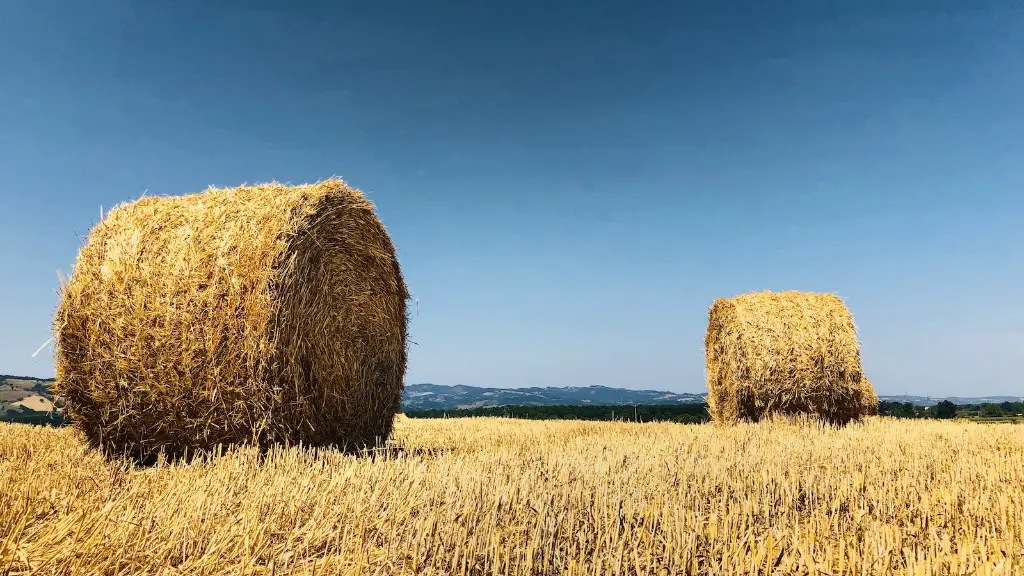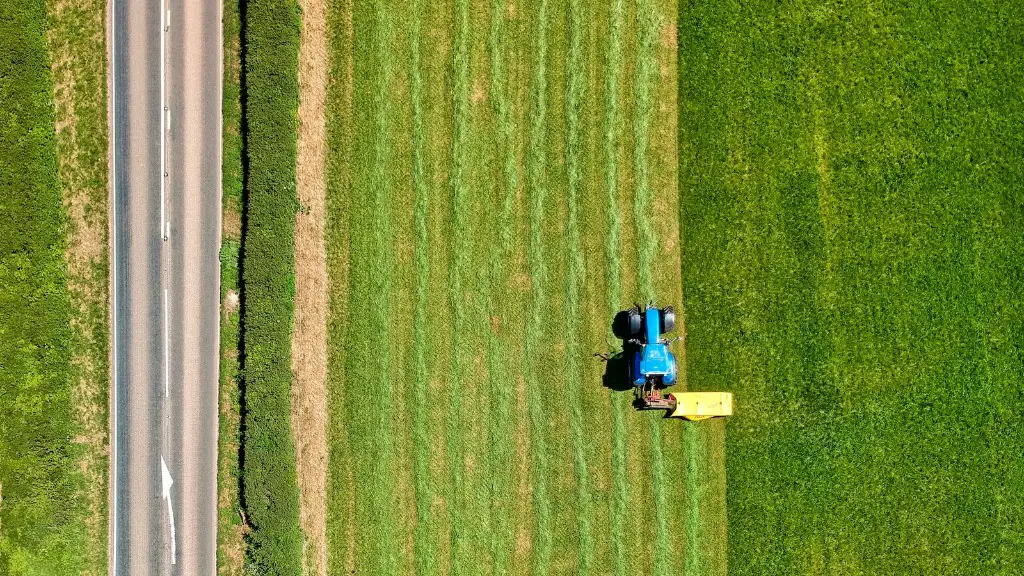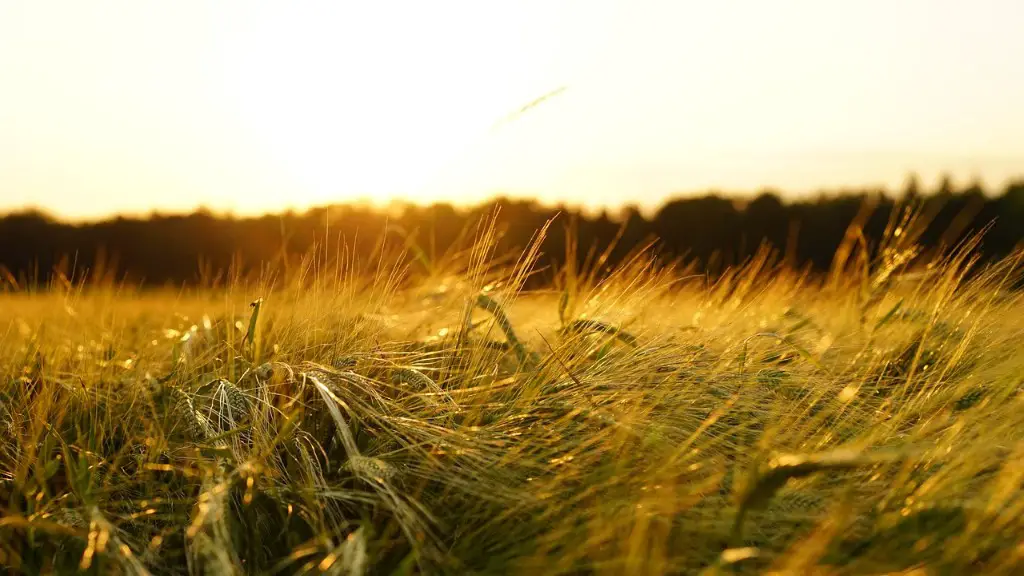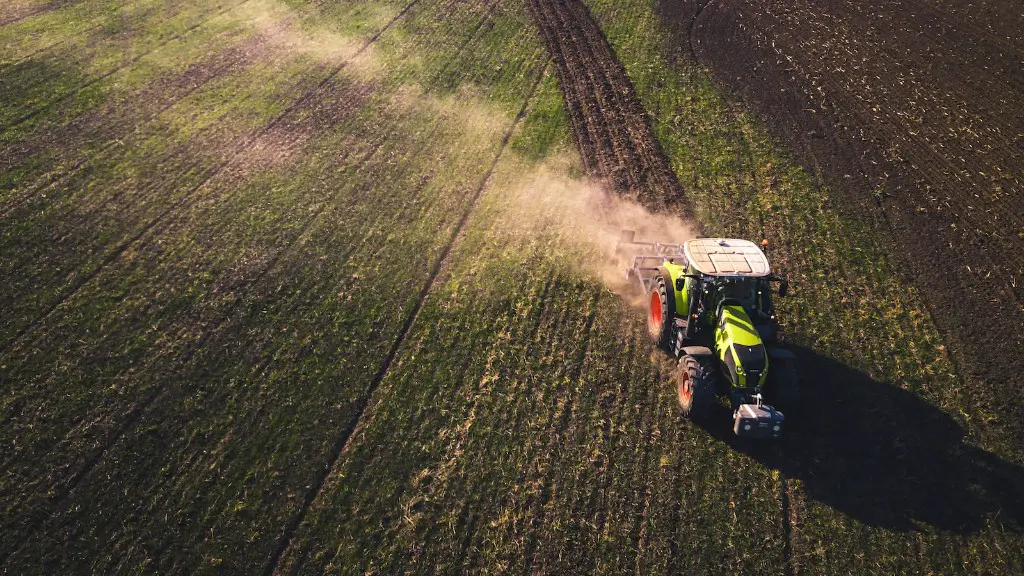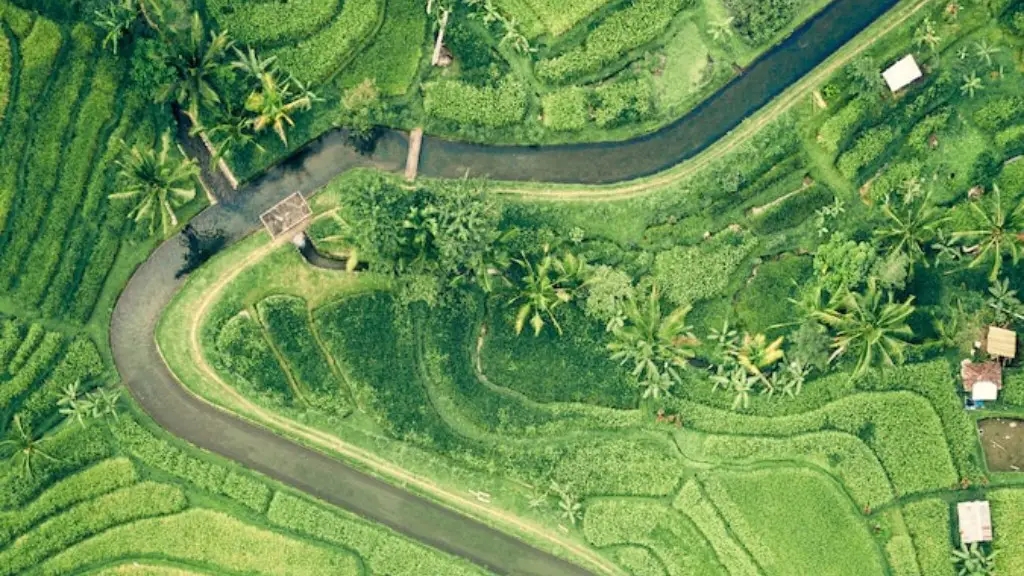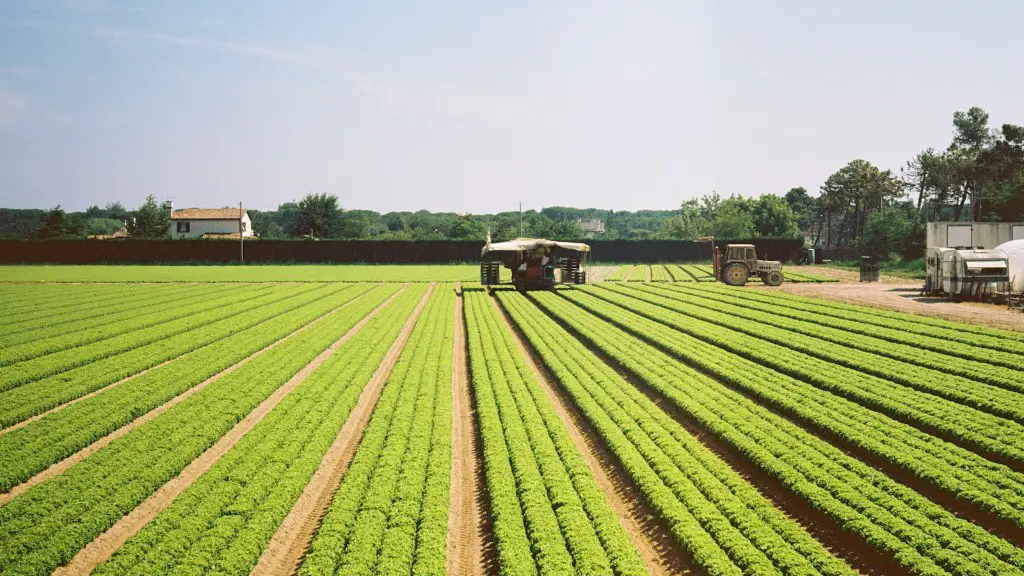Technology has always been a major part of agriculture, from the invention of the plow to the development of genetically modified crops. Today, farmers use a variety of technology-based tools to improve yields, reduce costs, and manage risk. precision farming, for example, uses information technologies to continuously monitor and manage crops, soils, and weather conditions. Farmers can also use mobile applications to track equipment, monitor crop health, and even receive real-time market information. In the future, technology will likely play an even bigger role in agriculture, as farmers grapple with the challenges of climate change and a growing population.
Technology is used in agriculture in many ways. Farmers use technology to help them with irrigation, planting, and harvesting. They also use technology to help with animal husbandry and to monitor the health of their crops.
What new technology is being used in agriculture?
The use of automated harvesters, drones, and autonomous tractors is transforming the way farmers cultivate their crops. The technology takes care of menial and recurring tasks, allowing farmers to focus on more critical functions. This change is making farming more efficient and productive.
Farms are increasingly utilizing various technologies to automate various tasks. Harvest automation, for instance, is used to automate the process of harvesting crops. Similarly, autonomous tractors can be used for tasks such as seeding and weeding. Drones are also being used increasingly by farms for tasks such as crop mapping and surveying.
How did technological advances in agriculture
Farm machinery has come a long way in recent years, becoming more efficient and productive. This has allowed farmers to cultivate more land and increase yields. Seed, irrigation, and fertilizers have also seen vast improvements, making it easier for farmers to get the most out of their land.
There have been some incredible innovations in agriculture over the past few years. Here are five of the most notable:
1. Data preserved in soil: Farmers are now able to collect and preserve data about their soil health and composition. This information can be used to make more informed decisions about crop rotation, irrigation, and other important factors.
2. Innovative agriculture moving underground: A new type of agriculture is emerging that takes advantage of the cool, stable temperatures underground. This allows for year-round production of crops, without the need for expensive greenhouses.
3. Greens fed on rainbow waste: A new type of vertical farm is using waste products from the food industry to feed its plants. This includes things like fruit and vegetable scraps, coffee grounds, and even food coloring.
4. Using the sun to generate freshwater: A new type of solar still is able to generate freshwater from seawater, using only the power of the sun. This could be a game-changer for communities in water-scarce areas.
5. Agriculture by aircraft: Aerial drones are being used to help with crop mapping, irrigation, and even crop spraying. This is helping farmers to be more efficient and effective in their work.
What are 5 examples of technologies used in agriculture?
There are many new technologies emerging in the field of agriculture, and it can be difficult to keep up with all of the latest developments. However, some of the most notable new technologies include GIS software and GPS agriculture, satellite imagery, drone and other aerial imagery, farming software and online data, and merging datasets. These new technologies are revolutionizing the way that agriculture is practiced, and they are providing farmers with new tools to increase efficiency and productivity.
Precision in the fields of agriculture is extremely important in order to ensure that farmers are able to get the best yields possible. By using science and technology, farmers are able to collect data and analyze it in order to determine the most efficient methods of production. Additionally, by monitoring growth and quality, farmers are able to make adjustments as necessary in order to improve yields. By using precision methods in agriculture, farmers are able to save money and increase their overall yields.
What technology has had the biggest impact on agriculture?
Labor and mechanization have improved how farmers raise crops and care for livestock. Tractors, planters, and combines are much larger and efficient. This has allowed farmers to produce more food with less labor.
In the past, farmers had to rely on manual labor to get their crops harvested. This was a very time-consuming and labor-intensive process. Thanks to the invention of the reaper, farmers are now able to harvest their crops much more efficiently. The reaper is a machine that cuts the grain stalks and collects them in a bin. This has greatly reduce the amount of time and labor needed to harvest crops.
The thresher is another invention that has greatly helped farmers in the production of food. The thresher is a machine that separates the kernels of grain from the straw. This is a very important process in the production of food because the kernels of grain are the part of the plant that is actually used for food.
The steam engine is another invention that has had a major impact on farmers. The steam engine was used to power the first combine harvesters. The combine harvester is a machine that combines the functions of the reaper and the thresher. The combine harvester is able to harvest the crops and also thresh them in a single operation. This has greatly reduce the amount of time and labor needed to produce food.
The automobile has also had a major impact on farmers. The
What are the types of technologies used in farming
Traction and power are two of the most important aspects of soil cultivation. Proper traction helps prevent soil compaction, while power assists in various soil cultivation activities such as tillage, planting, and hauling.
Soil cultivation is a critical part of agriculture and refers to any activity that helps prepare the soil for planting. This can include activities like tilling, plowing, and harrowing.
Planting is another vital part of agriculture and refers to the process of placing seeds or seedlings into the ground so they can grow.
Fertilizing and pest control are important activities for keeping plants healthy and free from pests. Fertilizers provide nutrients that plants need to grow, while pest control helps keep harmful insects and other pests from damaging crops.
Irrigation is a process of watering crops using either natural rainfall or artificially-created water sources. This is often necessary in areas where rainfall is insufficient or unpredictable.
Harvesting/post-harvest refers to the process of collecting crops once they are mature and ready to be sold or consumed. This can include activities like picking, threshing, and cleaning.
Hay making is the process of creating hay, which is a type of dried grass that is
The benefits of modern technology adoption in agriculture can not be exhausted, there is increased crop productivity, reduced impact on natural ecosystems, increased worker safety, decreased use of water, fertilizer, and pesticides among many others. As the world continues to search for more environmentally friendly and efficient ways of farming, it is important that we continue to support and invest in modern technology adoption in agriculture.
What are smart agriculture technologies?
Smart agriculture is a farming management concept using modern technology to increase the quantity and quality of agricultural products. The main objective of smart agriculture is to produce more food with less input while protecting the environment. The use of precision agriculture, intelligent irrigation systems, and other modern technologies can help farmers to increase crop yields and reduce inputs costs.
Drones are mainly used to monitor crops, spray fertilizers and pesticides, etc. They are called unmanned aerial vehicles (UAVs), and they are exactly as their name suggests – they are unmanned, meaning there is no need for a human pilot. This latest trend in agriculture and agricultural technology is revolutionizing the farming tech by reducing the amount of labor required to grow a crop.
What technology is used for sustainable agriculture
The introduction of new technologies is slowly but surely changing the way farmers operate. No longer are they reliant on manual labor and traditional methods – they can now rely on connected sensors, smart tractors, drones, and machine learning to get the job done more efficiently. This not only saves time and money, but also reduces the amount of water and fertilizer used, and ultimately the carbon output of the farm.
As technology advances, robots and drones are increasingly being used to replace traditional farm operations such as picking fruits, killing weeds, or spraying water or fertilizer on crops. This is due to the fact that imagery from drones and satellites, coupled with Global Positioning System (GPS) technology, provides a high-resolution and location-specific view of the field, making these machines more efficient and accurate than human workers. In addition, robots and drones are able to work for longer hours and in harsher conditions than humans, making them more cost-effective in the long run.
How technology is enabling smart farming?
Smart farming is the future of agriculture. By using modern information and communication technologies, farmers can increase the quantity and quality of their products while reducing the amount of human labor required. Sensors that measure soil, water, light, humidity, and temperature can help farmers manage their crops more efficiently. In the future, smart farming will become even more important as the world’s population continues to grow and the demand for food increases.
Modern agriculture is an evolving approach to agricultural innovations and farming practices that help farmers increase efficiency and reduce the number of natural resources like water, land, and energy necessary to meet the world’s food, fuel, and fiber needs. By using techniques like precision agriculture and conservation tillage, farmers can reduce the amount of water, land, and energy necessary to produce food and other crops. Additionally, modern agricultural practices can help reduce greenhouse gas emissions and help farmers adapt to a changing climate.
Final Words
Technology is used in agriculture to help farmers improve their crop production and yield. Farmers use technology to help them with various aspects of their farming operations, such as crop planning, irrigation, pests and diseases control, and harvest management. Technology can also help farmers to reduce their input costs and increase their profits.
In conclusion, technology is used in agriculture to help farmers with tasks such as crop production, crop monitoring, and irrigation. Farmers use technology to improve efficiency and productivity, and to help ensure food safety.
